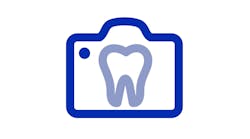Each month, Dr. Gordon Christensen answers a question from readers about everyday dentistry.
Q: I have been out of school for two years, and I am starting to become more confident about diagnosis, treatment planning, and treating patients. However, I still feel some of the patients lack confidence in me. What can I do to build patients’ trust in me?
A: All new young dentists have the challenge you are experiencing. I will share some concepts with you to help patients develop trust in you.
Patient education
Most patients have little knowledge of dentistry. They must trust you to feel comfortable, and that trust does not come rapidly or without effort. Eventually, as they develop trust in you, they will feel you know what you are doing, that your fees are appropriate and fair, that you are not overtreating them, and that they appreciate you as their dentist. How can you speed up their trust in you?
You may have heard these statements before. “Dr. X tells me everything about what he/she is going to do. Additionally, I am educated by pictures, drawings, models, x-rays, and verbally about the procedures as they are being done. If I am going to feel any discomfort, I am informed about it before it occurs, and very seldom do I feel any discomfort.” When patients are educated, they are usually calm and not apprehensive.
Delivering painless injections
An extremely important point in developing trust is providing painless injections. Unfortunately, there is not enough clinical time in most dental schools to develop competence in delivering painless injections. Some dentists never develop the ability to perform painless injections. Practice management authorities state that this procedure is one of the most important and influential procedures on which dentists are judged by patients. However, delivering painless injections is not something that is intuitive. It must be learned by experience after in-depth education on the topic.
Infiltration injections instead of blocks
Infiltration injections are known to be less painful than blocks. Articaine is now the most popular local anesthetic in dentistry. Articaine is twice as effective and profound as lidocaine and will work well with typical infiltration injections. Most routine dental procedures can be accomplished more painlessly by infiltration injections instead of blocks.
Buffering anesthetic solutions
As you know, local anesthetics are acidic. The human body is not. When the acidic anesthetic is injected, the body must change the pH to 7+ for anesthesia to occur, and this takes some time. Also, if the acidic anesthetic is injected too rapidly, the patient feels an immediate objectionable stinging sensation.
Buffering local anesthetics is not new. It has been used in other areas of medicine routinely, especially plastic surgery and dermatology. The subject has many significant research projects reported in the literature with some important conclusions. When buffering is accomplished, the wait time for the acidic anesthetic to be buffered is minimal. After a brief conversation with the patient, treatment can begin almost immediately. If infection is present in the operating site, buffering allows more adequate depth of anesthesia.
Various methods to achieve buffering of local anesthetics are well-known, ranging from doing it yourself to sophisticated devices for this purpose. Research on additional simplification of the procedure is still underway. Onpharma has developed a simple, well-accepted buffering system named Onset (figure 1). Premier and Septodont recently introduced a simplified and inexpensive buffering device named BufferPro. It is now being evaluated by Clinicians Report Foundation (figure 2). Initial research shows it has unprecedented simplicity and effectiveness.
Beveled injection needles
Many factors relate to injection pain. Among them is a debate on needle diameter. Needles vary significantly in their size and their point of penetration. Although controversial in the literature, the general perception is that smaller-diameter needles can diminish pain on injection. You undoubtedly know the small needles used for Botox injections or vaccinations usually elicit almost no pain, while larger-diameter needles are often mildly or moderately painful on injection.
A point often not discussed is the bevels on the needle. They should not be just a hollow tube that penetrates the tissue, like making a donut hole. Several companies now produce precision bevels on the tip of the needle (figure 3). Such needles used slowly, gently, and aimed correctly slide through soft mucous membranes imperceptibly. Example brands are Clinicians Choice, Septodont, and Transcodent.
Devices controlling speed of injection
All dentists have times when they are late in their schedule, and patients are nervously waiting for treatment. There is a tendency for each of us to speed up our treatment to get back on schedule, which includes injecting faster. Since this is such an important part of patient PR, increasing the speed of injections is not a good choice.
Some devices are present to allow you to set the time you prefer to deliver an injection, and the device will not let you go faster. Among such devices is the Dentapen from Septodont (figure 4). This device has two modes and three speed settings. It reduces hand pressure in delivering the anesthetic and allows the device to reduce your anxiety as you deliver the anesthetic.
Topical anesthetics
Almost all dentists and hygienists use topical anesthetics of various types before injecting. Benzocaine 20% is one of the most frequently used, although studies show oil of cloves is comparable to benzocaine in its effectiveness. But there remains a major problem! The problem with topical anesthetic use is clear. Some place the topical anesthetic and immediately inject the patient. These medications require time to work. If you question this statement, place some of your favorite topical anesthetic on your palate. Take an explorer and immediately analyze the anesthesia of that spot. Wait at least two minutes and try the explorer technique again. At least two minutes and up to five minutes are required for the topical anesthetic to work.
Pressure anesthesia
Some dentists and most experienced patients consider the palatal injection to be the most painful of all dental injections. In my opinion, the reverse is true—it can be the least painful.
As an example, try the following test on a staff member who is legally delivering local anesthetic for their experience and your own learning:
- Place topical anesthetic and let it work for at least two minutes.
- Use the wooden end of a typical Q-tip cotton-tipped applicator to apply pressure in the center of the location on the palate where the topical anesthetic was placed.
- The palate will turn white in that spot due to the pressure.
- Using the wooden end of the Q-tip as a guide, slowly and gently penetrate the white palate area exactly by the side of the wooden guide.
- If following the previous directions, the patient will only continue to feel the pressure you are applying—not the injection.
- If you don’t like the Q-tip procedure, use the Palatal Anesthesia Device from Master Dental and inject in the center of the target while applying heavy pressure (figure 5).
Follow-up communication with patients
Another highly important way to foster trust in patients has been shown to be following up after treatment with a phone call or at least a text or email. If the procedure was an especially difficult one with some expected postoperative discomfort, a phone call from the dentist is best. For less potentially challenging procedures, a front desk staff member or a dental assistant can contact the patient. The PR of such communication is a great way to make a patient feel trust in you and your staff.
Summary
You can get your patients to like and trust you and eventually refer other patients if you will educate them well before you do a procedure, keep them constantly appraised about what you are doing during the procedure, and if you can perform a painless local anesthetic injection. Most dental local anesthetic injections can be painless or nearly painless if suggested procedures and devices are used.
Editor's note: This article appeared in the February 2025 print edition of Dental Economics magazine. Dentists in North America are eligible for a complimentary print subscription. Sign up here.













